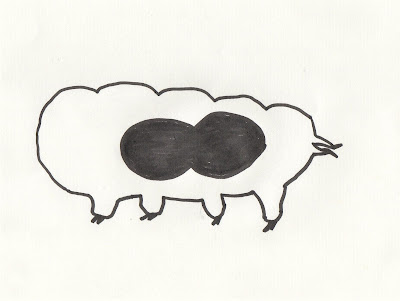This blog may help people explore some of the 'hidden' issues involved in certain media treatments of environmental and scientific issues. Using personal digital images, it's also intended to emphasise seasonal (and other) changes in natural history of the Swansea (South Wales) area. The material should help participants in field-based modules and people generally interested in the natural world. The views are wholly those of the author.
Thursday, 15 October 2020
The Strange Mystery of the Indestructible Tardigrade
Tardigrades (as the name suggests) are slow-moving segmented animals with 8 'legs' that are only 0.5-1.0 mm in length. They are also known as 'water bears' or 'moss piglets'. The Phylum has been around for at least 500 million years, with representatives in the sea and more recent (but still 100'sof millions of years ago) arrivals on land. Most feed on primitive plants, like algae, lichens and mosses, but a few are carnivorous. The weird thing about them is their ability to survive challenges that they would not presumably encounter on the Earth. They can recover from complete dehydration by going into a 'tun' phase which can survive for decades. Tardigrades can also survive being boiled at 150 degrees Celsius or being placed in liquid gases near to absolute zero. They appear to have mechanisms for protecting their DNA from both direct damage or via the formation of ice crystals. Tardigrades have been fired into space and have returned to Earth, capable of breeding. So some can, not only survive zero gravity and extreme cold, but they are undaunted by cosmic radiation. There is now a report of one species that produces a protein enabling the producer to survive an otherwise fatal blast of ultra-violet (UV) light (https://www.theguardian.com/science/2020/oct/14/tardigrades-latest-superpower-a-fluorescent-protective-shield ). The species in question essentially becomes fluorescent to remove the UV radiation. The basic question that has to be asked is,'how did these little animals develop these 'superpowers', if they were unlikely to encounter them?' The current suggestion is that most of them are fortuitous side-effects of the systems developed to survive drying out. It's still an unsolved mystery!
Subscribe to:
Post Comments (Atom)
Flowers of Oahu 177. Sea hibiscus (Talipariti tiliaceum)
This is a varigated variety, known locally as Mahoe.

-
I n the UK and US, a pparently popular and successful vegan/vegetarian restaurants are reportedly closing or adding meat to their menus ( ...
-
Early ripening fruit may seem convenient but some folk think it confirms environmental stress. There's also a possibility th...

%20mating%20NWCW.jpg)


No comments:
Post a Comment